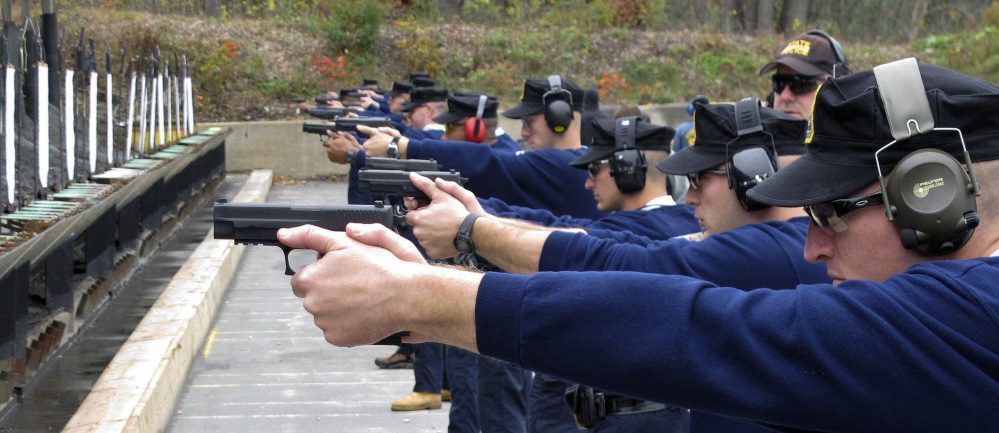HARTFORD, Conn. — Police departments are relaxing age-old standards for accepting recruits, from lowering educational requirements to forgiving some prior drug use, to try to attract more people to their ranks.
The changes are designed to deal with decreased interest in a job that offers low pay, rigorous physical demands and the possibility of getting killed on duty all while under intense public scrutiny. There’s also the question of how to encourage more minorities to become police officers.
“We have a national crisis,” said Eugene O’Donnell, a former police officer and now a lecturer at John Jay College of Criminal Justice in New York. “For the first time in my life, I would say I could never recommend the job. Who’s going to put on a camera, go into urban America where people are going to critique every move you make? You’re going to be demonized.”
There is no national standard for becoming an officer; it’s left up to each state to set requirements. In general, prior drug use or past brushes with the law, however minor, have been enough to bar someone from becoming an officer. On top of that are physical fitness standards that have long been academy graduation requirements. And even after graduation, recruits often face a background check that might include a credit-history review.
The physical requirements have impeded the hiring of women, while credit histories and education standards have stood in the way of some minorities. Amid the push to diversify, many police departments question whether those long-held, military-style standards are the best ways to attract officers able to relate to communities and defuse tensions.
Departments that are changing testing and other requirements that have been shown to disproportionately disqualify minority candidates were praised in a report released last month by the U.S. Department of Justice and the Equal Employment Opportunity Commission.
People from minority communities are more likely to be disqualified by criminal background and credit checks, because members of those communities are more likely to have contact with the criminal justice system and have lower credit scores, the report says. Minorities also may have more trouble on written tests that don’t accurately screen people for the skills needed for police jobs, it says.
A 2013 survey by the U.S. Department of Justice showed that about 12 percent of the nation’s officers were black and 12 percent were Hispanic. The percentages were higher than three decades earlier, but minorities continue to be underrepresented in many communities, according to the department. About 13 percent of the U.S. population is black and about 18 percent is Hispanic, according to the census.
The new police diversity report called diversity the linchpin to building trust between law enforcement and communities.
“Hiring is particularly problematic in this environment we live in,” said Chuck Wexler, executive director of the Police Executive Research Forum. “I’ve been in a room with a large group of police … I’ve asked how many of you would like your son or daughter to be a police officer, and no one raises their hand.”
Police say they have increased efforts to hire officers of color, including holding recruiting events in cities, targeting minority groups on social media, and visiting military bases and colleges.
Copy the Story LinkSend questions/comments to the editors.



Success. Please wait for the page to reload. If the page does not reload within 5 seconds, please refresh the page.
Enter your email and password to access comments.
Hi, to comment on stories you must . This profile is in addition to your subscription and website login.
Already have a commenting profile? .
Invalid username/password.
Please check your email to confirm and complete your registration.
Only subscribers are eligible to post comments. Please subscribe or login first for digital access. Here’s why.
Use the form below to reset your password. When you've submitted your account email, we will send an email with a reset code.